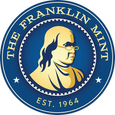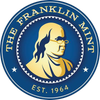Soon after the assassination of the 35th President of the United States, John Fitzgerald Kennedy, on November 22, 1963, plans about honoring him through the country’s currency came into action. Shortly after, in February of 1964, the first strike of the Kennedy Half Dollar was inaugurated. Ever since then, the coin has been admired by the people, especially collectors, and that attests to the legacy that President Kennedy has left in the hearts of many generations.
Historical Background of the Kennedy Half Dollar


On the day of Kennedy's assassination, the Director of the Mint, Eva Adams, talked with the Chief Engraver, Gilroy Roberts, about representing Kennedy on a coin within hours of the tragic incident. When asked about which denomination to choose from; the silver dollar, half dollar, or quarter dollar, First Lady Jacqueline Kennedy decided on the half dollar because it would not require replacing President George Washington on the quarter dollar. The half dollar during that time had Founding Father Benjamin Franklin featured on its obverse and Liberty Bell on the reverse.
The Kennedy half dollar was accepted by Congress about a month after Kennedy's death, and the bill authorizing the coin was passed on December 30, 1963. The coin was first minted in 1964, with a simultaneous ceremonial first strike at the Philadelphia and Denver Mints on February 11, 1964.
About The Designers
The exquisite design of the Kennedy Half Dollar was the result of the skill and talent of Gilroy Roberts, Chief Engraver of the U.S. Mint, and Assistant Engraver Frank Gasparro. They had been asked to modify their initial models for the John F. Kennedy Presidential Series Medal that they had completed in 1961. Roberts was responsible for the obverse side of the coin, where he changed the initial profile design, while Gasparro took care of the reverse side and altered the early Presidential Seal design of the medal. During his lengthy tenure with the U.S. Mint, Gasparro designed many well-known coins. Two of which are the Susan B. Anthony dollar and the reverse of the Lincoln Memorial cent.
Hoarding of The Kennedy Half Dollar
The effect of the assassination left a scar in the hearts of the people. They were waiting for any memento of the President to keep for years to come. When the Kennedy Half Dollar was first introduced to the public on March 24, 1964, it was subjected to immediate hoarding from people all over the United States. Despite proportioning the stock, the Treasury Department in Washington, D.C. sold out of all 70,000 coins by the end of the first day. Banks in Philadelphia and Boston ran out by noon, even after limiting the purchase to 40 coins per customer.
At first, Director Adams had ordered the striking of 90 million Kennedy Half Dollars, but the very fast demand made The Mint increase this target to 160 million. However, by the end of 1964, special permission was granted to The Mint to continue minting 1964 Kennedy Half Dollars into 1965, eventually minting around 410 million coins.
From Silver to Copper and Nickel
By 1965, the government's stockpile of silver had been significantly reduced due to the excessive minting of the Kennedy Half Dollar, worsened by the short supply of silver around the world. Consequently, the 1965-1970 editions were clad in silver on the outside with a copper core. However, from 1971 onwards, the coins had been made from copper and nickel, while keeping the pure silver ones to the Mint’s proof sets. Whatever metal it is made from, the Kennedy Half Dollar is undoubtedly a one-of-a-kind coin.
The Kennedy Half Dollar has been the most admired coin by collectors due to its unique design and its commemorative nature. At The Franklin Mint, we offer a variety of Kennedy Half Dollar products and coins, make sure to check them out here.










Related Articles
The History of the Standing Liberty Quarter
The History of the Franklin Half Dollar
The History of the Susan B. Anthony Dollar
The History of the Morgan Silver Dollar
The History of the Lincoln Wheat Penny